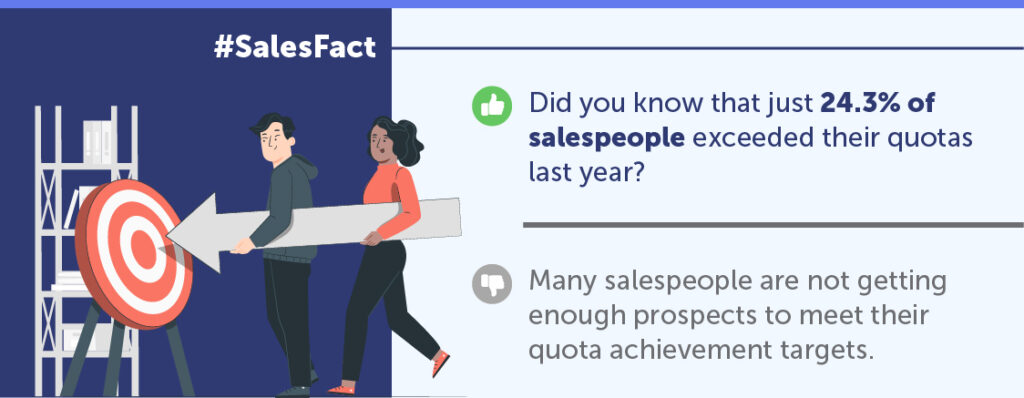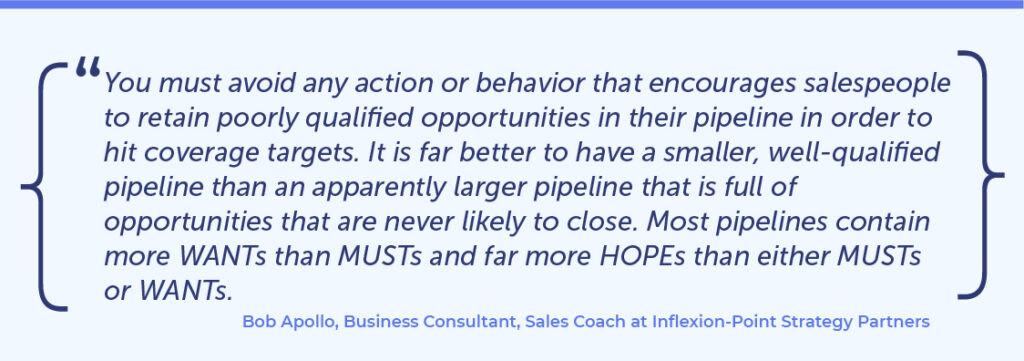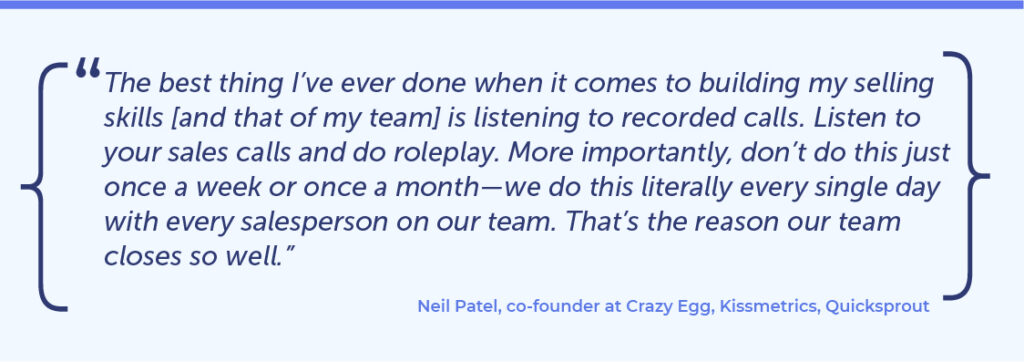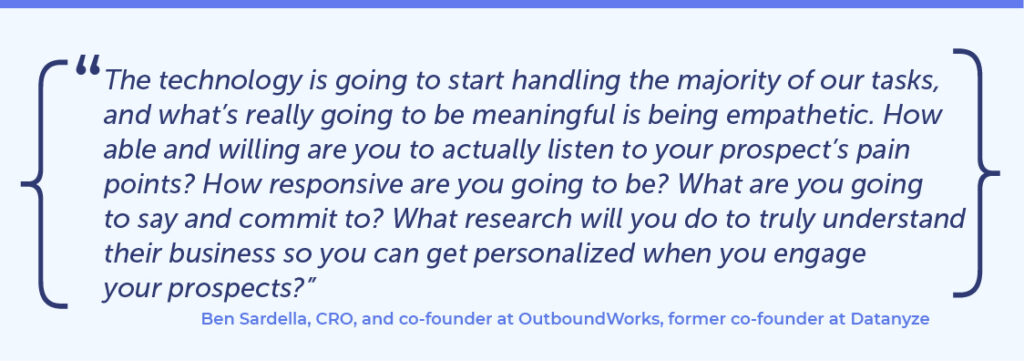Now that we’re in the second half of the year, it’s an excellent time to regroup, recalibrate, and prepare your sales teams to meet their revenue targets.
Hitting sales quotas can be a challenge. Maybe your team has gotten a little off-pace since the goal was set. By reviewing your status and developing an action plan, your team will have a path to follow.

Many salespeople are not getting enough prospects to meet their quota achievement targets.
Do you know how successful leaders got to where they are today and what they put in their action plans?
We have compiled the top five sales leaders’ secrets to provide you and your team with a road map to success.
Reasons Reps Don’t Make Quota
Many factors can influence your team’s ability to meet quota, but the following are the most important:
- There aren’t enough sales possibilities in the pipeline.
- Working with a sluggish sales process.
- Having an insufficient training program.
- Sales reps fail to express product value to prospects.
Many sales leaders attribute missed targets to salespeople not spending enough time prospecting, but salespeople are more likely to blame their lack of quota attainment on a lack of prospects in the pipeline. Sales executives also complain that they have a clear sales process that is not followed by their teams.
Salespeople who missed the quota had moderate-to-low levels of sales training (both on product and skills), were not supported by a formal sales coaching program and received no formal training on how to communicate value to clients.
Top 5 Secrets to Hit Sales Quotas
While the formula for quota attainment will always be unique to each salesperson and sales team, here are critical steps you can take to improve.
1. Take Learnings from Yesterday for a Better Tomorrow
Analyzing patterns in your performance enables you to identify problem areas and plan the next measures for improvement.
Ideally, your team conducts post-sale analysis regularly and documents the results. This step is often disregarded because salespeople are anxious to move on to the next deal.
However, analyzing the outcomes is incredibly beneficial for developing a future sales strategy. Make it a point to learn from your mistakes and replicate what has worked in the past.

Break down your sales funnel at each step and identify where deals are stalling. Is it in the early phases or late stages? Knowing the answer will help you prioritize training and coaching for your sales team.
2. Fill Your Sales Pipeline
Filling the sales pipeline is a challenge for both sales leaders and salespeople. To maintain a full sales pipeline, firms must prioritize lead creation as well as a systematic approach to prospecting by sales personnel.

Many sales managers think that their salespeople are ignoring their prospecting efforts. To overcome this issue, a consistent strategy is required. You need patience and discipline in the prospecting process, which includes designating non-negotiable time blocks on your schedule to prospect.
Persistence will pay off if you complete your study to discover your prospects’ requirements, wants, desires, and issues. You are more likely to elicit a response if you relate your message to the company’s top-line difficulties.
Adapt your cadence across numerous communication channels while prospecting. For example, you may send an email with value-added information, call two days later, and leave a message if you receive their voicemail. Wait two days before sending a LinkedIn InMail requesting a connection, and then call three days later.
Most sales representatives quit too soon. A Rain Group study discovered that it takes an average of eight touchpoints to get a meeting (or conversion) with a new prospect. Prospecting success requires perseverance and innovation.
3. Every Single Sales Call is a New Learning Experience
When making a successful call, preparation is necessary. Calling a potential customer without enough preparation, whether it’s a cold call or a planned contact, is the quickest way to earn a “no.”

You must know who you are calling. You should have the persona in place, whether it’s an individual who appears to be the perfect fit for your product or a business owner whose software can be more valuable from your service.
Besides more practice, you’re passing up an opportunity if you phone prospects at random between 9 a.m. and 5 p.m. every day. You may better target your efforts when prospects are more likely to answer the phone and when they are more likely to speak with you if you keep track of when they are more likely to answer the phone and when they are more likely to speak with you.
4. Consistently communicate value
Communicating value is highly correlated to sales reps who meet quota. You must be able to communicate the actual value a product delivers beyond its features and capabilities.

Reps get more traction with their prospects when they express value. Communicating value takes some effort and requires reps to understand their prospects’ businesses. You must be prepared with smart questions that will cause people to pause, take notes, and participate.
5. Make Use Of Sales Intelligence
Sales AI is helping sales leaders in automating sales processes. With the best sales intelligence tools, you can find data as deep as anonymous traffic and new decision-makers at target firms – all without manual research. Whether it’s generating quality leads, guiding consumers through buyer journeys or increasing conversion rates, every piece of information about the client helps to “position the hammer” in the perfect location for the “decisive tap.”

Sales Intelligence shows salespeople whom they should be talking to, the specific conversations they should be driving and the best times to reach out to prospects.
Let Us Assist You Hit Your Sales Quota Together
That’s what SalesIntel is here for, to help you find your ideal prospects and immediately jump into conversations.

To summarize, including SalesIntel in your sales process may boost your chances of success by making you more productive in three critical areas:
- You may have a greater impact on clients and locate more potential consumers and know-how to influence them to buy.
- You may develop abilities that will translate into a greater closing rate.
- You may teach your staff time and task management strategies that will allow them to spend more time selling.
Want to get started with knowing your untapped potential customers?





